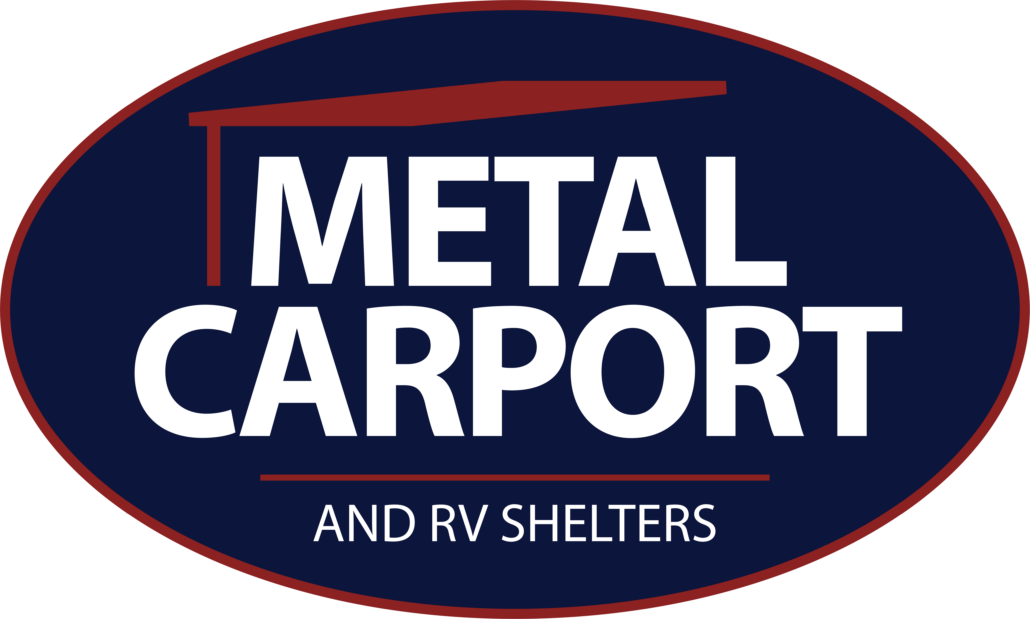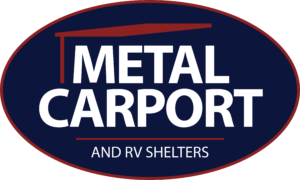Frequently Asked Questions
We answer the commonly asked questions about do-it-yourself (DIY) metal RV shelter kits. Read more to find out: What is an RV shelter kit? What tools do I need to build my RV shelter? Do I need a permit? And more!
What is an RV Shelter Kit?
An RV carport, or RV shelter, is a covering to park your RV under that shields it from the elements that cause damage overtime. A RV carport kit is designed by an engineer but is put together by you. It arrives with the precut metal and instructions you need to fully assemble your RV metal carport.
What materials are used for RV Shelters?
RV shelters in general can be made from wood, concrete, aluminum, tin, or steel.
Ours are made of heavy duty steel which come in a standard Galvalume finish or painted finishes. With metal RV carports, homeowners can expect a more durable and longer lasting carport compared to carports made of other materials. This is why metal is one of the most common choices for carports as they ensure homeowners a longer lifespan with minimal maintenance needed.
What size shelter should I get for my RV?
Choosing the appropriate size for your RV carport is, without a doubt, one of the most important aspects of the process.
To ensure that your carport isn’t too tiny, take into account the length, breadth, and height of your RV. A width of 12′ tends to work well for RV owners who do not have slide outs. A 12 foot wide RV carport takes up the least amount of area and is the cheapest choice. The 18 foot wide carport is the most typical choice for RVs with extended slide outs. This carport’s size allows you to park your RV with all of its slides extended.
The length and height of your carport are determined by the size of your RV and the amount of space you desire inside.
How can I order an RV Shelter?
Ready to order an RV shelter kit?
If you’re ready to buy a metal RV carport kit, you can simply fill out our quote form online or give us a call at (877) 787-5467.
If you would like a custom built metal RV shelter kit, please include your desired measurements when filling out our online form or be sure to mention it to our sales representative.
Do I need a permit to get an RV carport?
Permit may or may not be required, it depends on local building code. Be sure to call your city or county building department.
For instance, for residents in Los Angeles County, it is required that you have a building permit to construct a carport structure. In order to obtain a building permit you will need a site plan of the proposed carport showing its size and setbacks from property lines. A building permit fee is based on the valuation of the structure plus a nominal permit issuance fee. A licensed contractor is recommended for any construction project, but a homeowner/builder can take responsibility for construction regardless of who actually performs the work. You or your contractor may obtain the required permit(s) at the District Office serving your area, a link is provided for your convenience for locations of our district offices.
What tools do I need to build my DIY RV Shelter?
If you are installing the metal RV shelter yourself, here’s what you need for a successful installation process:
- Drill (power or cordless)
- Screw or tek gun
- Hammer
- Tape measure
- Saw
- Snips
- Level
- Rivet gun
- Ladder
- Shovel
- Writing utensils (markers, pens, etc.)
- String and chalk line
- Silicone gun and silicone
- Safety glasses and gloves
What can I do to prepare before my RV Shelter arrives?
Check with your local city or county planning authorities before preparing your site for carport construction to see whether you need a building permit to put up a metal structure on your property.
Here are the main steps to preparing for your metal carport installation:
- Clear your area that’s designated for the metal carport.
- Make sure to mark any underground utilities.
- Be sure to properly level the ground. This depends on the type of foundation used. For soil-based foundations, make sure the ground is even throughout the entire space.
For concrete foundations, you’ll need to pour the concrete slab on your site prior to the carport installation. Note: When laying a concrete foundation, keep the following dimensions in mind, the length of the roof and the length of your base.
How long does it take for my RV Shelter kit to be delivered?
Typically, it takes 2-4 weeks for your metal RV shelter kit to be delivered to you.
In the meantime, before your shelter kit gets delivered to you, make sure your site is well prepared. See the question above to know what you should do to prepare.
When are metal base plates required?
The base plate is used when the kit cannot or is not being cemented into the ground as a “permanent” option. It Attaches to a pre poured cement footing, allowing the metal carport kit to be removed.
Base plates are sold separate and made optional, some cities or counties will not require plans if base plates are used because it is then not a “permanent” structure.
What are engineered drawings?
Engineered drawings are the plans and specifications for the works to be constructed or purchased within any subdistrict, including maps, profiles, plans and other data that may be necessary to set forth the location.
The purpose is to convey all the information necessary for manufacturing a product or a part. Engineering drawings use standardised language and symbols. This makes understanding the drawings simple with little to no personal interpretation possibilities.
How does a live load differ from a snow load?
The term snow load is used in reference to the downward force on a building’s roof by the weight of accumulated snow and ice. VersaTube structures are pre-engineered to handle more than the snow load, they also have to ensure the structure will meet the live load requirements.
The live load includes everything that can be moved in or out of a structure over the course of its life. Calculating the live load requires knowing how the structure will be used. The type of use is normally referred to as the “occupancy” of the structure.
As the occupancy of the structure may change over its life, reasonable assumptions are sometimes made. If the occupancy of a structure changes to one of much heavier occupancy, then additional engineering may be necessary to meet the building code requirement for that usage.
Accurately predicting the live load that a structure may see over its lifetime is very difficult. The International Building Code calculates the live load requirements based on experience, measurements, and probability.
Can I make additions to the carport after it has already been installed?
Yes you can. A permit may be required. However, if you do so it would cancel the engineering and the kit would not meet building codes.
How should I measure my space to make sure I have enough room for my structure? What about the height of my structure?
Refer to the kit sizes, as we offer are overall sizes so posts are set in from depths of kits. You’ll need to clear a place large enough for your construction as well as for the metal carport to be installed. Begin by determining the width of the space to determine whether you will be able to create a level area large enough. Then, take a measurement of the length of the space and double-check that it is level.
When you measure for space, make sure that any vehicle or equipment you want to store in the carport, garage, or RV carport is shorter than the structure’s height. They are engineered to heights based on building codes so carport and RV kit heights vary. Typically 12’-0” max on carports and 15’-0” on RV kits. If you intend to enclose the carport or RV carport in the future, make sure the building is large enough to allow a garage door that fits the vehicle.








